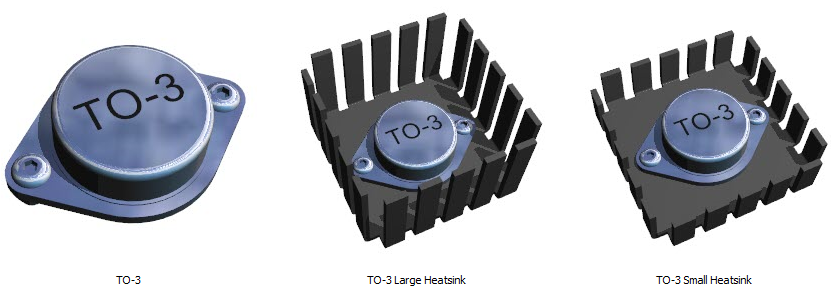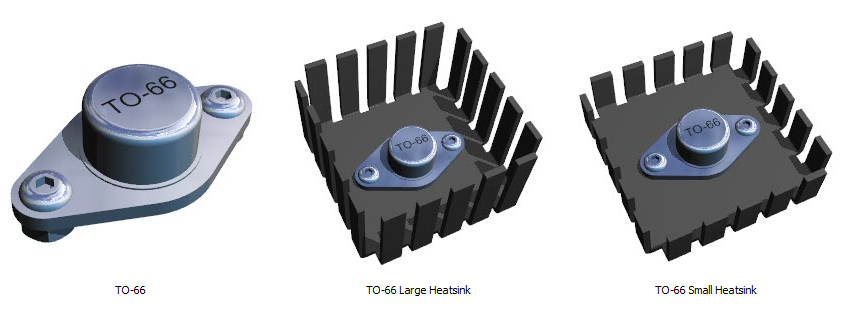TO 3
The TO-3 package is a type of semiconductor package that is often used for power transistors and some integrated circuits. The acronym "TO" stands for "Transistor Outline," and "3" refers to the specific package style as per the JEDEC standard.

TO 3
Unlike the SOT packages (Small Outline Transistor) which are typically used for surface mount devices, the TO-3 is a through-hole package. This means that it is designed to be inserted into holes drilled in printed circuit boards (PCBs) and then soldered into place.
The TO-3 package has two leads and a metal tab which can serve as a third electrical connection. This metal tab is also used as a heat sink to dissipate heat away from the device, which makes TO-3 packages ideal for high-power transistors that generate a lot of heat.
One of the characteristic features of the TO-3 package is its large, metal, can-like shape. While this makes it less suitable for compact, high-density electronic devices, it provides excellent heat dissipation for high-power applications.
TO-66

TO-66
The TO-66 package is a type of semiconductor package, often used for high power transistors. The acronym "TO" stands for "Transistor Outline," and "66" refers to the specific package style.
The TO-66 is a through-hole package, which means it's designed to be inserted into drilled holes in printed circuit boards (PCBs) and then soldered into place.
The TO-66 package typically has two leads and a metal tab. This metal tab, like the one found on the TO-3 package, is usually used for both electrical connection and as a heat sink to dissipate heat away from the device. This characteristic makes the TO-66 suitable for components that generate considerable heat, such as power transistors.
The TO-66 is smaller and more compact than the TO-3 package but can still handle high-power applications due to its design.
As always, for specific information such as pin assignment, electrical characteristics, or precise physical dimensions, refer to the manufacturer's data-sheet for the specific device in question.